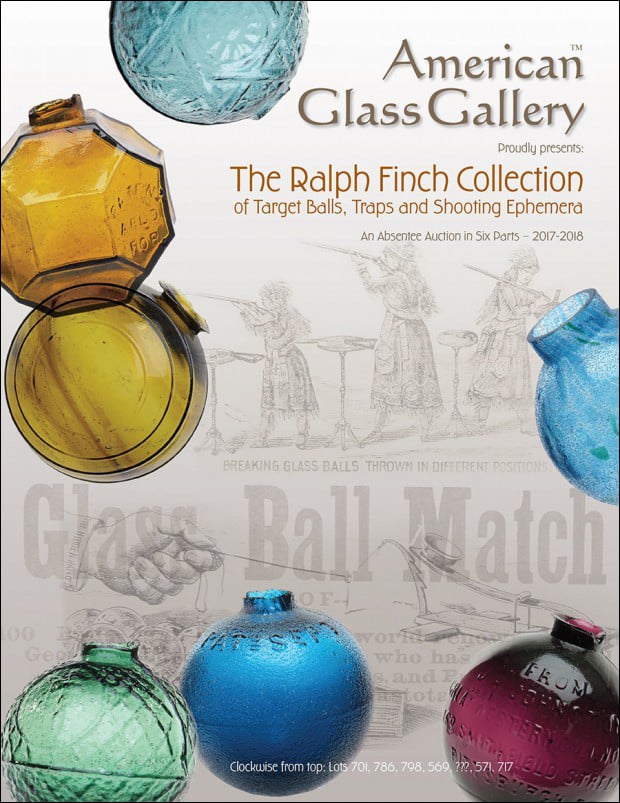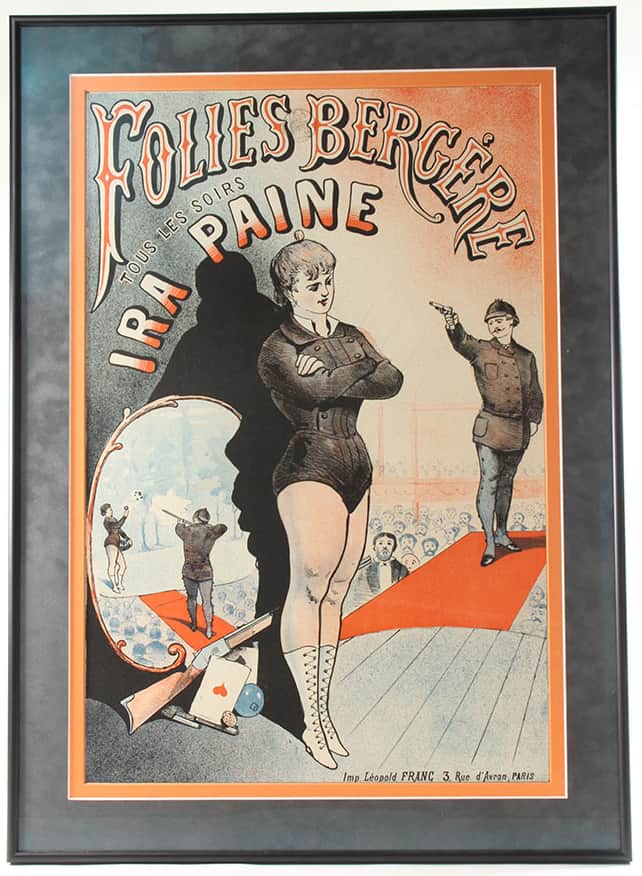 Ralph Finch Collection of Target Balls, Traps and Shooting Ephemera, Part I
Ralph Finch Collection of Target Balls, Traps and Shooting Ephemera, Part I
09 December 2017
![]() I’ve written about target balls and Ralph Finch before as I visited the collection back in November 2013. The collection is now being represented and auctioned by John Pastor with American Glass Gallery. Here are a few gems from Part I of the auction that closed on 28 November 2017. If you have not seen the catalog, I must say, it is one of the nicest auction catalogs I have ever seen.
I’ve written about target balls and Ralph Finch before as I visited the collection back in November 2013. The collection is now being represented and auctioned by John Pastor with American Glass Gallery. Here are a few gems from Part I of the auction that closed on 28 November 2017. If you have not seen the catalog, I must say, it is one of the nicest auction catalogs I have ever seen.
Read: Looking at some of the many Finch Target Balls
Read: Target Balls – Glass Made to be Broken
John’s description of the catalog: The most important and comprehensive collection of Target Balls, Traps, and Shooting Ephemera ever assembled. The catalogue will become the de facto reference guide, worldwide – Alan Blakeman, British Bottle Review. 80-page Full-Color Catalog encompassing 315 Lots including information on What are Target Balls?, History of Target Balls, Who Made Target Balls?, Target Ball Traps and. Highlights on many of the most rare and desirable target balls. Part 1 Auction
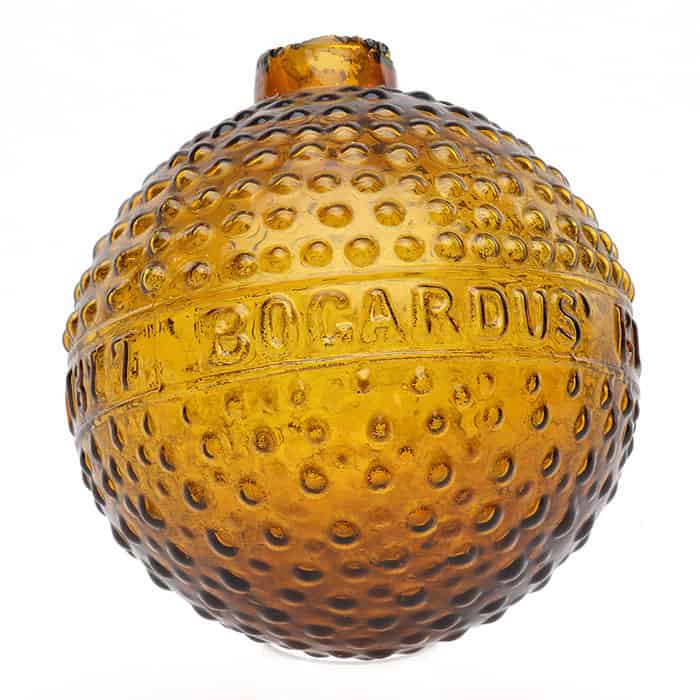
“BOGARDUS’ GLASS BALL PAT’D APR 10 1877.” Target Ball, America, 1877 – 1900. Light golden or honey amber, overall hobnail pattern above and below center band, 3-piece mold, rough sheared mouth, dia. 2 5/8″, mint. Extremely rare hobnail design that is seldom offered for sale, and one of the key molds for any Bogardus collector. – American Glass Gallery | Ralph Finch Collection | Part 1
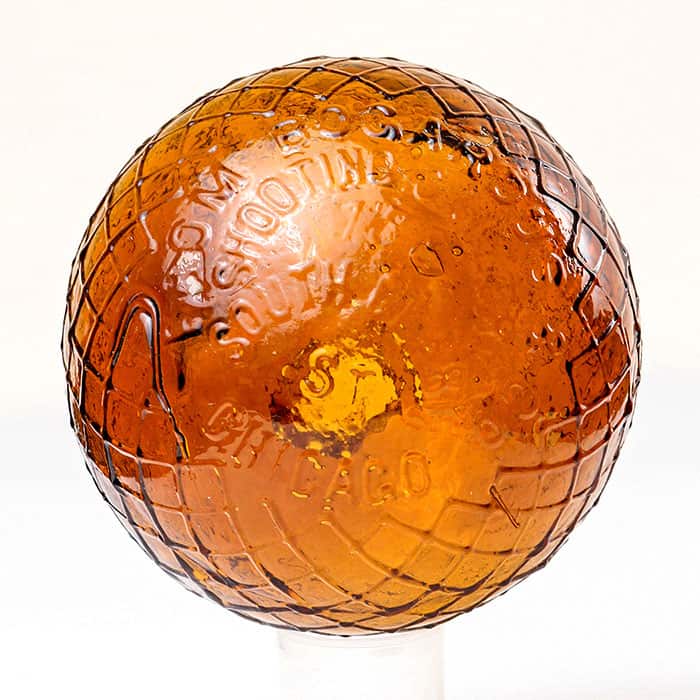
“FROM BOGARDUS & CO / SHOOTING GALLERY / 158 / SOUTH CLARK / ST / CHICAGO – BOGARDUS GLASS BALL PATD APR. 10 77″ Target Ball, America, 1877 – 1900. Golden amber, quilted diamond pattern on sides, 3-piece mold, rough sheared mouth, dia. 2 5/8”, mint. An extremely rare and desirable ball being embossed, “Shooting Gallery”, along with an address and patent date. It is perhaps one of the most desirable of all the Bogardus target balls. – American Glass Gallery | Ralph Finch Collection | Part 1
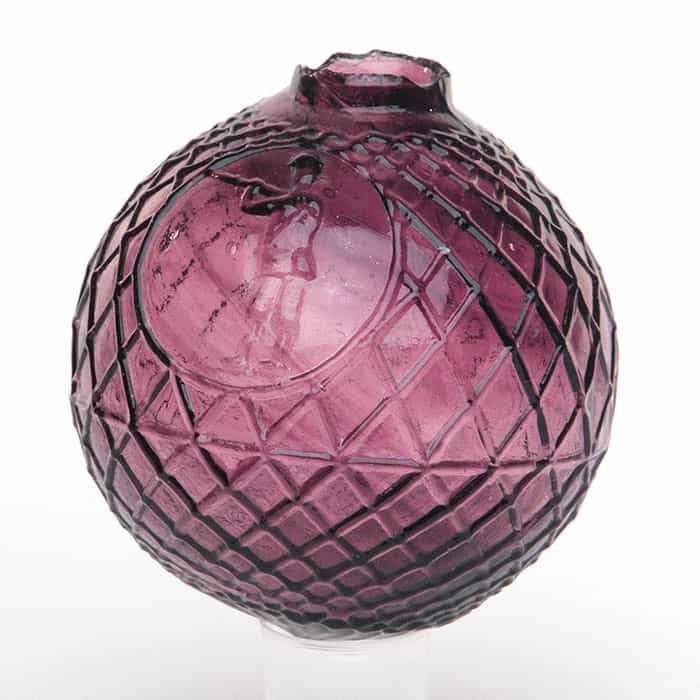
Shooter Ball, motif of a Man Shooting a Gun (within circle) Target Ball,England, 1875 – 1900. Gorgeous light to medium pink amethyst coloration with some attractive deeper striations swirled through the shoulder and base, 3-piece mold, quilted diamond pattern, rough sheared mouth, dia. 2 5/8″, near mint; (in-manufacture ¼” hairline fissure from top of sheared mouth, otherwise perfect). Strong impression, outstanding eye-appealing color, beautiful! – American Glass Gallery | Ralph Finch Collection | Part 1
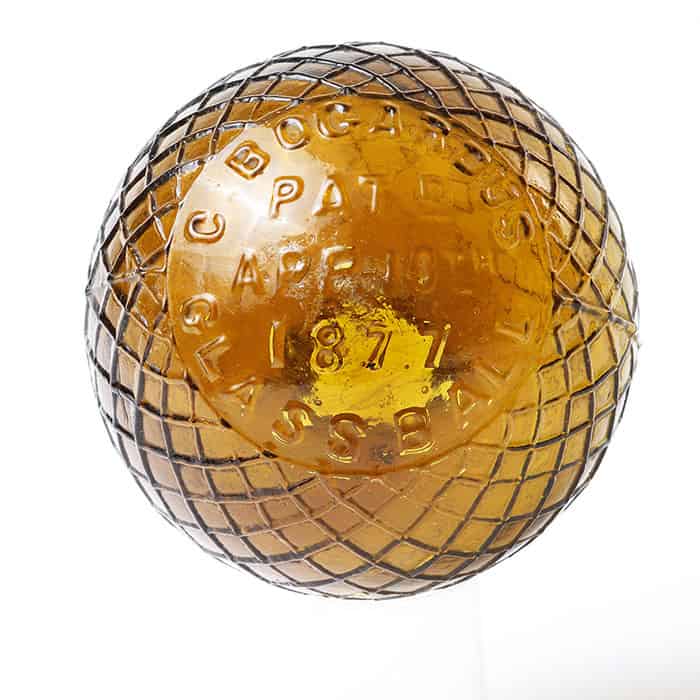
“C. BOGARDUS / PATD / APR. 10TH / 1877 / GLASS BALL” Target Ball, America, 1877 – 1900. Honey amber with an olive tone, almost an olive amber coloration, quilted diamond pattern on sides, 3-piece mold, rough sheared mouth, dia. 2 5/8″, mint. Very rare, base-embossed mold that is rated among the most difficult and challenging of all the various Bogardus molds to acquire. In addition, this example has nice crisp embossing. – American Glass Gallery | Ralph Finch Collection | Part 1
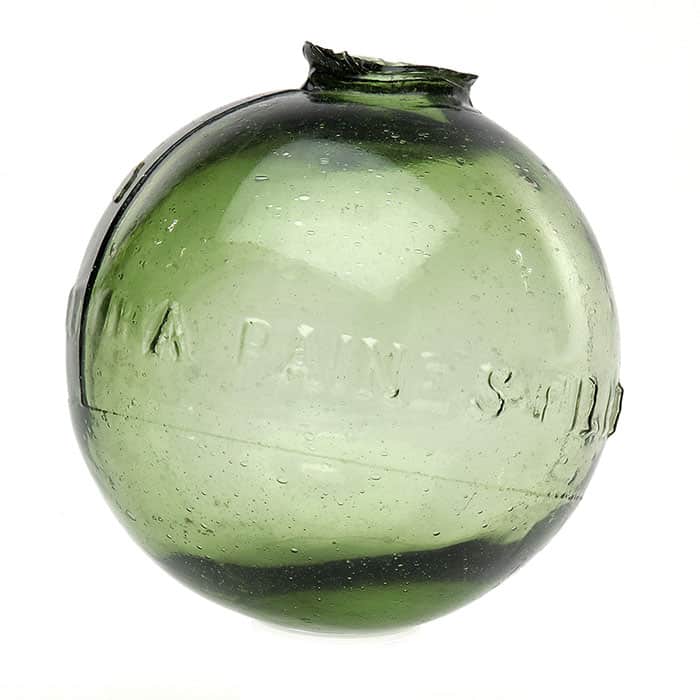
“IRA PAINE’S FILLED BALL PAT. OCT 23 1877″ Target Ball, America, 1877 – 1900. Olive green with a moss tone, 3-piece mold, rough sheared mouth, dia. 2 5/8”, perfect. Another very scarce color for an Ira Paine’s ball. This one in a more pure olive coloration, one that does not come around often. – American Glass Gallery | Ralph Finch Collection | Part 1
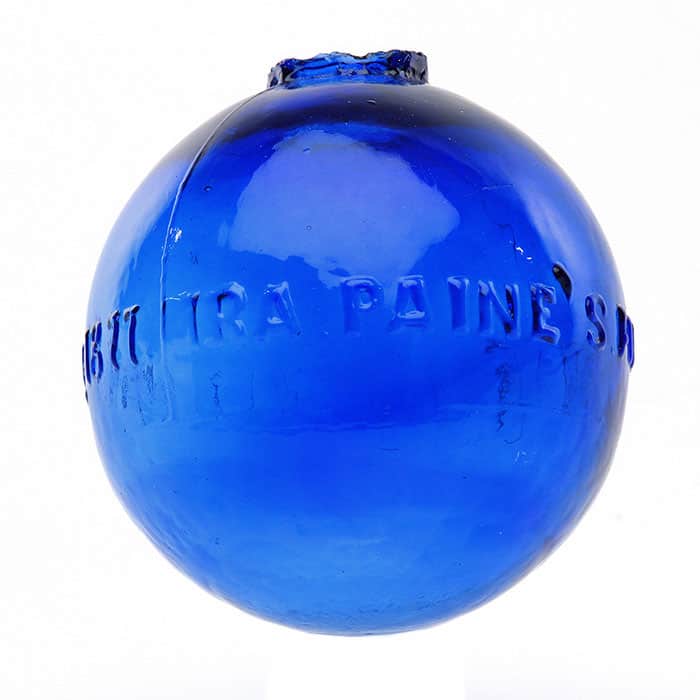
“IRA. PAINE’S FILLED BALL PAT. OCT. 23, 1877.” Target Ball, America, 1877 – 1900. Gorgeous, medium-to-deep cobalt blue, 3-piece mold, rough sheared mouth, dia. 2 5/8″, perfect. Crisp, strong embossing (not easy to find on these balls), whittled, and in a rare and usual color for an Ira Paine Ball. A top example! – American Glass Gallery | Ralph Finch Collection | Part 1
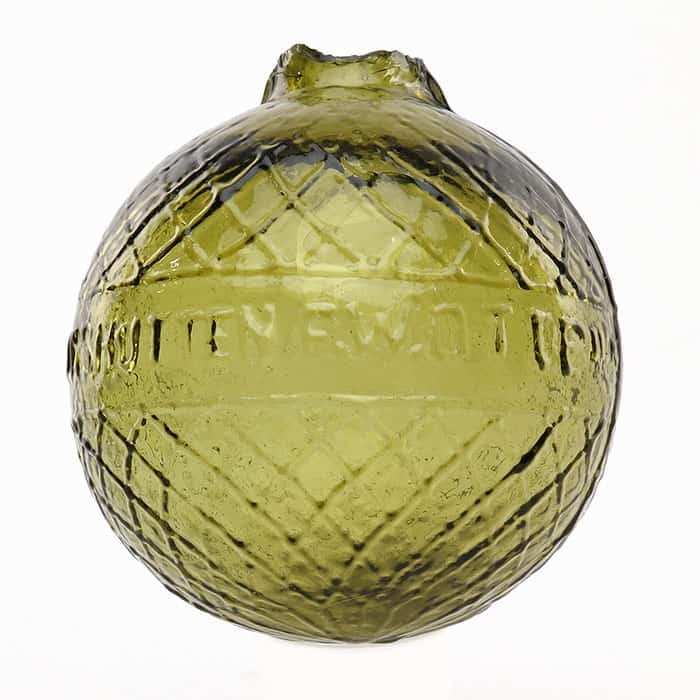
“F.W. OTTE JUN – CHARLOTTENBURG – GLASHUTTEN ” Target Ball,Germany, 1875 – 1900. Olive green with a slight yellowish tone, quilted diamond pattern above and below center band, 2-piece mold, rough sheared mouth, dia. 2 5/8″, perfect; (note, some faint in-manufacture annealing lines below the sheared mouth mentioned for complete accuracy). Similar in appearance and embossing to the Dr. A. Frank balls, but considerably more difficult to acquire. – American Glass Gallery | Ralph Finch Collection | Part 1
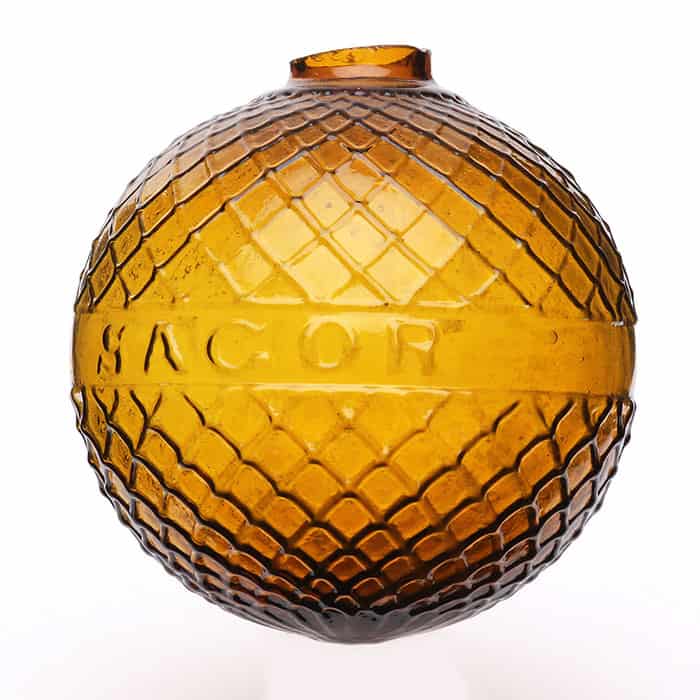
“SAGOR” Target Ball, America or Continental, 1875 – 1900. Golden amber, quilted diamond pattern above and below center band, 3-piece mold, factory ground mouth with minor, 3/16″ flat flake (likely in-manufacture), dia. 2 5/8″, near attic mint. Believed to be unique, and the only example that has come to light in 45 years of collecting. This ball was discovered in New England in the late 1990’s, along with a small batch of other target balls. – American Glass Gallery | Ralph Finch Collection | Part 1
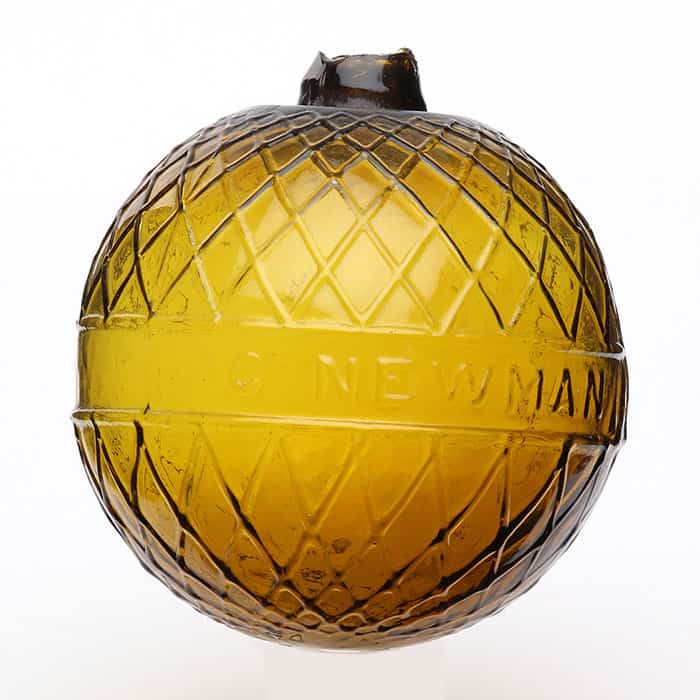
“C. NEWMAN” Target Ball, San Francisco & Pacific Glass Works, San Francisco, 1880 – 1890. Light honey amber, quilted diamond pattern above and below center band, 3-piece mold, rough sheared mouth, dia. 2 5/8″, perfect. A rare and desirable target ball. Carlton Newman was the proprietor of the San Francisco Glass Works, and also purchased the Pacific Glass Works in 1875. A very historical ball that does not come around often. – American Glass Gallery | Ralph Finch Collection | Part 1
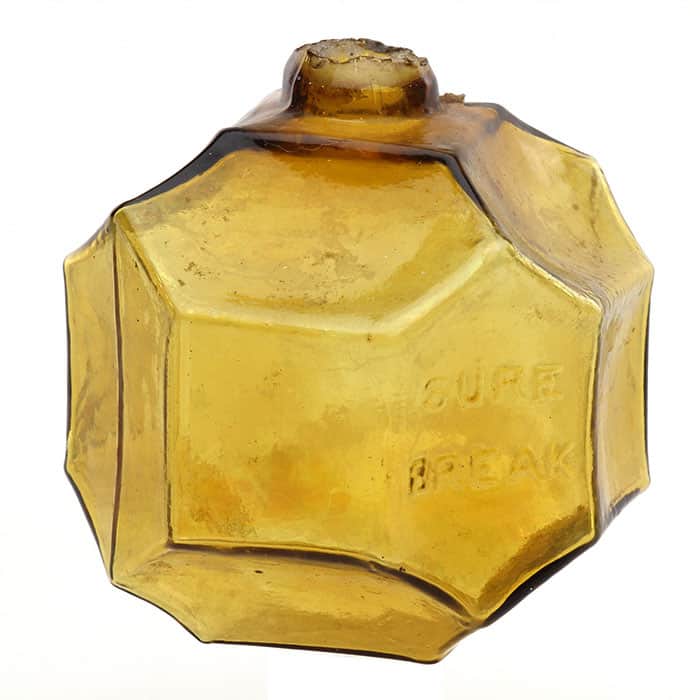
“SURE / BREAK – PATENT / APL’D / FOR.” Target Ball, America, 1875 – 1890. Yellowish honey amber, octagonal with three series of concave panels around entire ball, 2-pc. mold, rough sheared mouth, 2 ½” wide; (some light interior stain, otherwise perfect). Designed as the name implies, with sharp corners and edges so that the shot would not easily deflect and the ball would be more sure-to-break! Extremely rare, and one of the most distinctive and desirable of all the target balls. – American Glass Gallery | Ralph Finch Collection | Part 1

